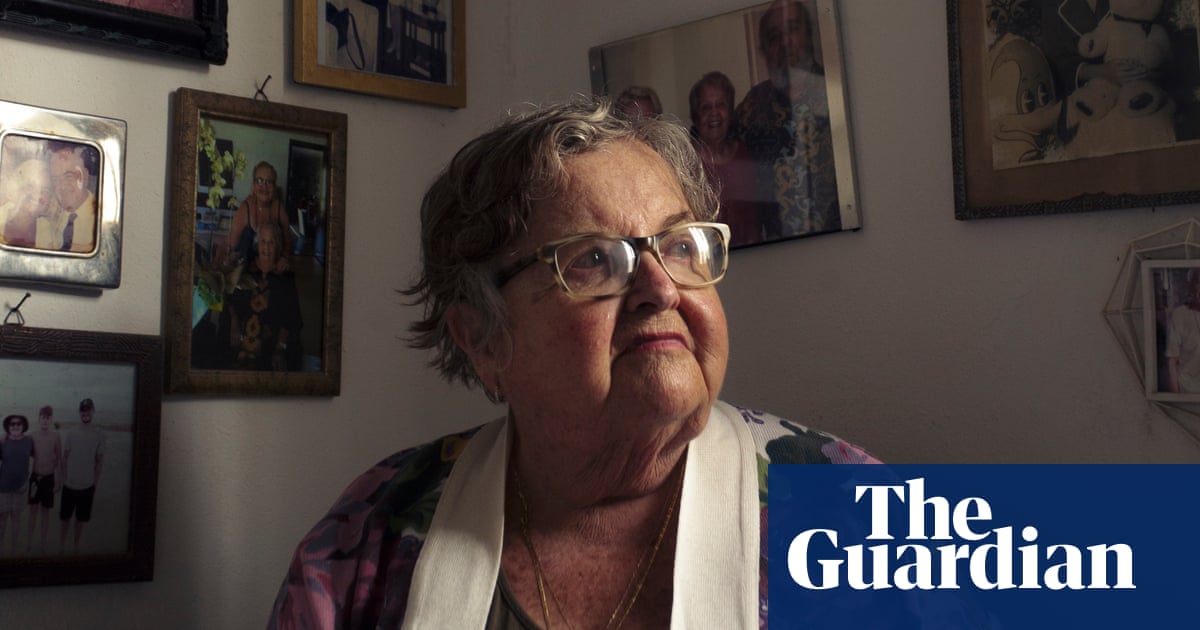An opera-loving member of high society turned eco-activist who was forced into police protection with a panic button round his neck. A Hollywood actor who recorded said activistâs life story as he was dying from exposure to the very chemicals he was investigating. Throw in two investigative journalists who realise not everything is as it seems, then uncover some startling truths, and you have âpodcastingâs strangest teamâ on Buried: The Last Witness.
On their award-winning 2023 podcast Buried, the husband and wife duo Dan Ashby and Lucy Taylor dug into illegal toxic waste dumping in the UK and its links to organised crime. This time, they focus on âforever chemicalsâ, specifically polychlorinated biphenyls (PCBs) and set out to discover whether one whistleblower may have been decades ahead of his time in reporting on their harmful impact.
âItâs amazing how big the scale of this story is,â says Ashby, as we sit backstage at the Crucible theatre, where they are doing a live discussion as part of Sheffield DocFest. âWith this series, we donât just want it to make your blood turn cold, we want it to make you question your own blood itself.â
It all started when Taylor and Ashby were sent a lead about the work of former farmerâs representative Douglas Gowan. In 1967, he discovered a deformed calf in a field and began to investigate strange goings on with animals close to the Brofiscin and Maendy quarries in south Wales. He linked them to the dumping of waste by companies including the nearby Monsanto chemical plant, which was producing PCBs.
PCBs were used in products such as paint and paper to act as a fire retardant, but they were discovered to be harmful and have been banned since 1981 in the UK. However, due to their inability to break down â hence the term forever chemical â Gowan predicted their legacy would be a troubling one. âI expect there to be a raft of chronic illness,â he said. He even claimed that his own exposure to PCBs (a result of years of testing polluted grounds) led his pancreas and immune system to stop working. âIâm a mess and I think it can all be attributed to PCBs,â he said.
However, Gowan wasnât a typical environmentalist. âA blue-blood high-society Tory and a trained lawyer who could out-Mozart anyone,â is how Taylor describes him in the series. He would even borrow helicopters from friends in high places to travel to investigate farmersâ fields. Gowan died in 2018 but the pair managed to get hold of his lifeâs work â confidential reports, testing and years of evidence. âIâm interested in environmental heroes that arenât cliche,â says Ashby. âSo I was fascinated by him. But then we started to see his flaws and really had to weigh them up. My goodness itâs a murky world we went into.â
The reason they were able to delve even deeper into this murky world is because of the award-winning actor Michael Sheen who, in 2017, came across Gowanâs work in a story he read. He was so blown away by it, and the lack of broader coverage, that he tracked him down. âI got a message back from him saying: âPlease come and see me because Iâll be dead soon,ââ says Sheen. âI took a camera with me and spent a couple of days with him and just heard this extraordinary story.â
What Gowan had been trying to prove for years gained some traction in 2007, with pieces in the Ecologist and a Guardian article exploring how âMonsanto helped to create one of the most contaminated sites in Britainâ. One was described as smelling âof sick when it rains and the small brook that flows from it gushes a vivid orange.â But then momentum stalled.
Years later, in 2023, Ashby and Taylor stumbled on a recording of Sheen giving the 2017 Raymond Williams memorial lecture, which referenced Gowan and his work. Before they knew it, they were in the actorâs kitchen drinking tea and learning he had conducted a life-spanning seven-hour interview with Gowan before his death. So they joined forces. Sheen isnât just a token celebrity name added for clout on this podcast; he is invested. For him, itâs personal as well as political. âOnce you dig into it, you realise thereâs a pattern,â he says. âAll the places where this seems to have happened are poor working-class areas. Thereâs a sense that areas like the one I come from are being exploited.â
Sheen even goes to visit some contaminated sites in the series, coming away from one feeling sick. âThat made it very real,â he says. âTo be looking into a field and going: âWell, Iâm pretty sure thatâs toxic waste.ââ Sheen was living a double life of sorts. âI went to rehearsals for a play on Monday and people were like, âWhat did you do this weekend?ââ he says. ââOh, I went to the most contaminated area in the UK and I think I may be poisoned.â People thought I was joking.â Sheen ended up being OK, but did have some temporary headaches and nausea, which was a worry. âWe literally had to work out if we had poisoned Michael Sheen,â says Ashby, who also ponders in the series: âHave I just killed a national treasure?â
The story gets even knottier. Gowanâs findings turn out to be accurate and prescient, but the narrative around his journey gets muddy. As a character with a flair for drama, he turned his investigation into a juicy, riveting story filled with action, which could not always be corroborated. âIf he hadnât done that, and if heâd been a nerdy, analytical, detail-oriented person who just presented the scientific reports and kept them neatly filed, would we have made this podcast?â asks Taylor, which is a fascinating question that runs through this excellent and gripping series.
Ashby feels that Gowan understood how vital storytelling is when it comes to cutting through the noise. âWe have so much science proving the scale of these problems we face and yet we donât seem to have the stories,â he says. âI think Douglas got that. Fundamentally, he understood that stories motivate human beings to act. But then he went too far.â
However, this is not purely about Gowanâs story â itâs about evidence. The Last Witness doubles up as a groundbreaking investigation into the long-lasting impact of PCBs. âWe threw the kitchen sink at this,â says Ashby. âThe breakthrough for us is that the Royal Society of Chemistry came on board and funded incredibly expensive testing. So we have this commitment to go after the truth in a way that is hardly ever done.â
From shop-bought fish so toxic that it breaches official health advice to off-the-scale levels of banned chemicals found in British soil, the results are staggering. âThe scientist almost fell off his chair,â says Ashby. âThat reading is the highest he has ever recorded in soil â in the world. That was the moment we knew Douglas was right and we are now realising the scale of this problem. The public doesnât realise that even a chemical that has been banned for 40 years is still really present in our environment.â
To go even deeper into just how far PCBs have got into our environment and food chain, Ashby and Taylor had their own blood tested. When Taylor found 80 different types of toxic PCB chemicals in her blood it was a sobering moment. âI was genuinely emotional because itâs so personal,â she says. âIt was the thought of this thing being in me that was banned before I was even born and the thought of passing that on to my children.â Ashby adds: âWeâve managed physical risk in our life as journalists in Tanzania and with organised crime, but more scary than a gangster is this invisible threat to our health.â
In order to gauge the magnitude of what overexposure to PCBs can do, they headed to Anniston, Alabama, once home to a Monsanto factory. âAs a journalist, you have an inbuilt scepticism and think it canât be that bad,â says Ashby. âBut when I got there I couldnât believe what I was seeing. I hate to use words like dystopian, but it was. There is a whole massive school that canât be used. Thereâs illnesses in children and cancers. It truly was the most powerful vignette of the worst-case example of these chemicals.â
Itâs bleak stuff but instilling fear and panic is not the intention. âObviously, weâre really concerned about it,â says Ashby. âAnd although the environmental crises we face do feel overwhelming, it is incredible how a movement has formed and how individuals are taking action in communities. The lesson to take from Douglas is that the response doesnât have to be resignation. It can be agency.â



